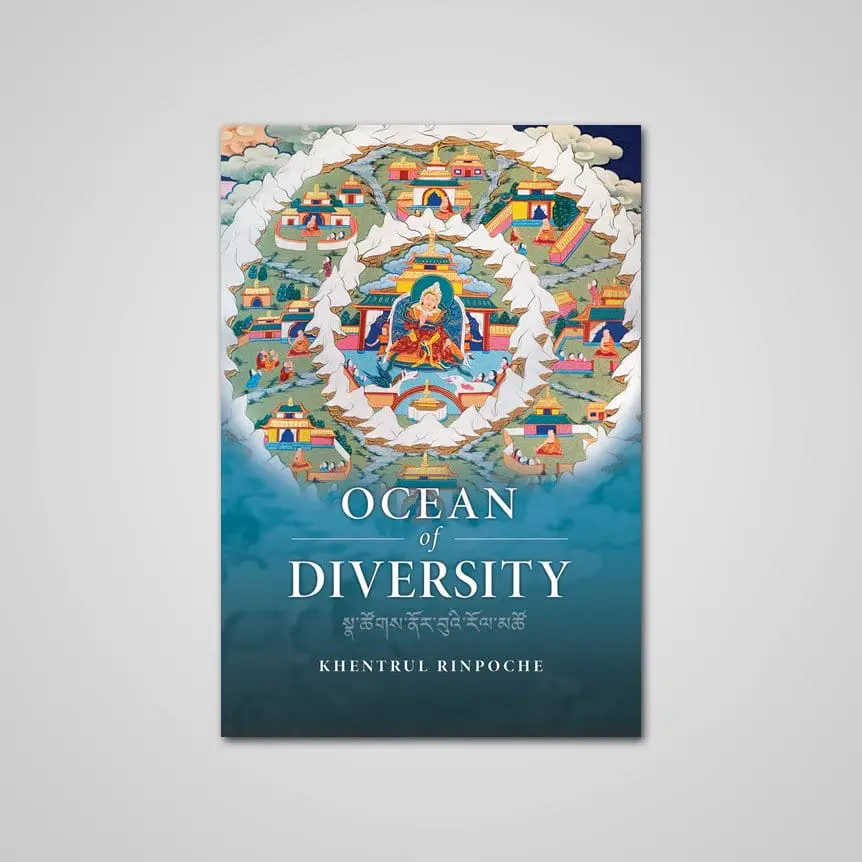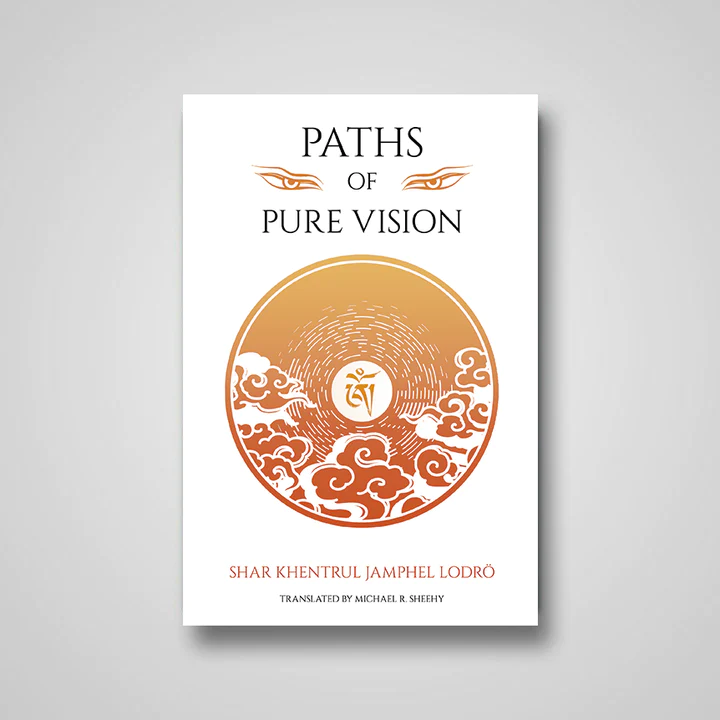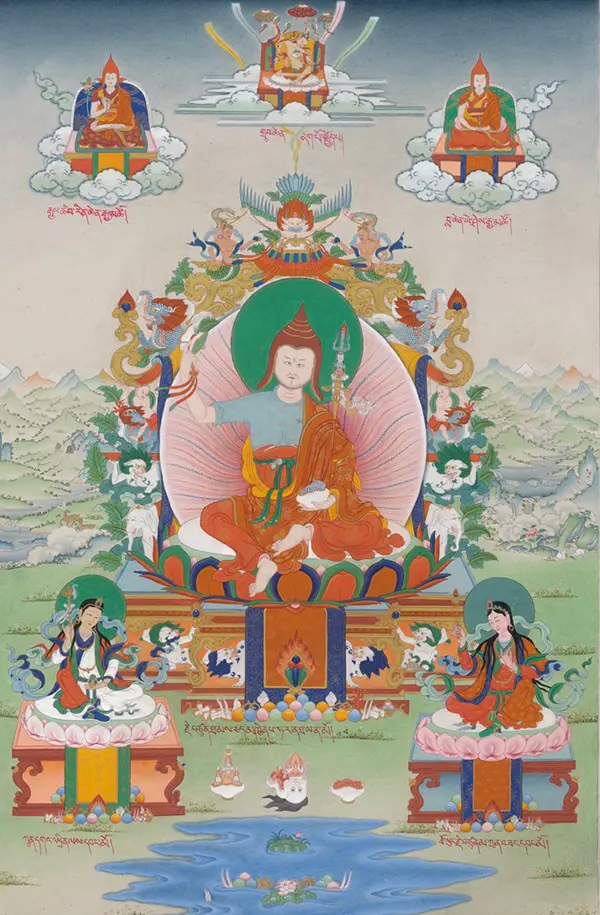Our Rimé Approach
There is a Dharma Path for EveryoneThe literal meaning of ‘rimé’ is a ‘non-sectarian’ or ‘non-biased’ view. While some people relate this to the idea that all systems are equal, it actually focuses on recognising the value and benefit of multiple points-of-view. Through this philosophical approach, the great masters of the past were able to discover the definitive meaning of the Buddha’s profound teachings.
One way to understand this is to consider how we use medicine. There are many medicines and each has the capacity to cure specific types of sicknesses. We do not normally mix our medicines. Instead, we recognise the specific needs of each patient and choose the right medicines for helping them overcome their problems.
In the same way, developing a Rimé philosophy means knowing how each system works, what are its defining characteristics, what are its strengths and how can it be used to alleviate dissatisfaction. While we may have a personally favourite view, a favourite practice or a favourite system, there is no contradiction. We can hold a non-sectarian view while recognising that specific practices and teachings are especially suited for our needs.
Rime means philosophy, view point or approach in a non-sectarian way.
Khentrul RinpocheKalachakra is Rimé in Spirit
The Kalachakra teachings go beyond religion. It is pointing to our sacred truth that is beyond all limitations, including race, religion, time and space. The Kalachakra Tantra is very special. This highest yoga tantra initation is often given publicly to all people regardless of their religious background. In the realm of Shambhala, King Manjushri Yashas united the whole kingdom by giving empowerment into the Kalachakra Tantra. At this time the people were practicing a lot of different religious faiths. Through the power of these teachings they were able to realize their own sacred truth no matter what religion they had been following.
The Rime Movement
The Rimé View is most often connected with the great masters of the 19th century Jamyang Khyentse Wangpo and Jamgön Kongtrul Lodrö Thaye. The movement that they popularised was however deeply rooted in the work of previous masters. In the early 16th century, the great master Jonang Kunga Drolchok laid the foundations for the Rimé movement when he travelled extensively throughout many regions, gathering and practicing a wide variety of transmissions, empowerments and pith instructions. He collected these into his great work “The Hundred Teachings of Drolchok” (dolchok tridgya). Then in the late 16th century, Kunga Drolchok’s reincarnation Kyabdak Drolway Gonpo (Jetsun Taranatha), continued his non-sectarian work by searching out and gathering the transmissions of many nearly extinct lineages. In particular, he placed particular emphasis in preserving the teachings of the Shangpa Kagyu, whose teachings survive to this day due to his efforts. Khyentse Wangpo and Jamgön Kongtrul further expanded on this work by propagating the teachings widely and publishing many volumes of teachings and commentaries. Jamgön Kongtrul, who is believed to be the reincarnation of Taranatha, was responsible for authoring five treatises known as “The Five Treasuries”. These incredibly vast and comprehensive volumes present a wide range of the teachings, empowerments and rituals of the wisdom traditions developed in Tibet.
Developing the Rimé View
The Rimé view can be understood in variety of ways. At the most fundamental level, Rimé is expressed as a feeling of respect based on faith. This person may or may not know the specific reasons why they respect or believe in the different traditions. Instead she relies on a general sense for the common values that each tradition represents. This level of the Rimé view is often a result of cultural conditioning, positive influences and innate predispositions.
From this foundation of respect, individuals begin to develop a more active, inquisitive level of the Rimé view. This is characterised by an open-minded approach which longs to understand the distinguishing factors of different traditions. There is a sense of wanting to know more, to expand one’s understanding and perspective. It is a process of investigation where the individual actively probes and tests different ideas. In so doing, she resolves doubts and gains greater insight into the strengths and weaknesses of each tradition.
As the individual continues to develop her understanding, she begins to develop a sense of stability in her view. There is an inner resilience that allows her to face criticisms and biased arguments without losing their deeper perspective. She can see how each tradition relates to the others and how they can bring benefit to different types of people. At this level, the individual has developed an unshakeable and genuine respect for pluralistic traditions.
Why it’s important to have a Rimé view
Dzokden strives to view all traditions with equal respect and to embraces the Rimé spirit, especially to help students new to Buddhism. Students from any background can learn to practice the teachings of Kalachakra.
Traditionally, Tibetan Buddhist practitioners place a strong emphasis on the view and instructions passed on through their own lineages. This is crucial in maintaining authenticity of the teachings as you need to understand how to practice from the view of the tradition you are following. Furthermore, many practitioners spend their entire lives in one monastery and devote much time and effort to a thorough training in one tradition, to the exclusion of others. As a result some practitioners are less open to the views and good qualities of other traditions.
The Rimé movement is critical to the advancement of Buddhism on a global scale as it teaches practitioners to respect all traditions, with the goal of creating a sound foundation of Dharma knowledge and practice. With this balanced view comes the ability to assist many people regardless of their beliefs. This is one of the main goals of Rimé and is recognised by many Tibetan masters as a rare and precious view of Buddhism. In 2003, His Holiness the 14th Dalai Lama recognised Khentrul Rinpoche as a genuine Rimepa master, encouraging him to continue spreading this important movement.
༄༅།། ཆོས་ལུགས་རིས་མེད་སྨོན་ལམ་རྫོགས་ལྡན་ཞི་བདེ་བསུ་བའི་སྐྱ་རེངས་ཞེས་བྱ་བ་བཞུགས་སོ།།
The Rising Sun that Welcomes a Golden Age of Peace and Harmony
An Unbiased Aspiration for All Wisdom Traditions
A collection of Khentrul Rinpoche’s unrestricted rimé prayers are available in the Dzokden Learning Center.
Rimé Books By Khentrul Rinpoche

Ocean of Diversity
Buy on the Dzokden store or at Amazon.com
In a time of particularly strong violence and conflict, whole regions of the globe are engaged in ideological struggles, rooted in widespread ignorance and fear. How do we free ourselves from this situation? How can we learn to heal our wounds and to live in harmony with our neighbors? How can we truly achieve lasting peace and happiness? It is exactly these questions that have been asked for thousands of years by many of the world’s great sages. Their profound wisdom has made its way from generation to generation in the form of a diverse range of spiritual traditions that provide ongoing support and inspiration to millions of people.
In this book, Khentrul Rinpoche presents a unique set of practical tools that we can all use to tap into the great diversity of wisdom and methods that this world has to offer. Through the development of a broad view that encompasses all of this diversity, we can each find a path that is capable of leading us forward toward the peace that we seek. In this process, we learn that diversity does not have to divide us. Instead, it can be a powerful force to bring us together.

Paths of Pure Vision
Buy on the Dzokden store or at Amazon.com
Paths of Pure Vision consolidates the multiple facets of spirituality in Tibet by elaborating three themes: historical developments, philosophical views, and meditative practices. Narrating the historical processes of Buddhism developing in India and its transmission to Tibet, this book gives us a rare glimpse into the major figures, thoughts and that comprise the spiritual heritage of Tibet. In this book, Shar Khentrul Jamphel Lodrö Rinpoché explains the indigenous Bon religion of Tibet, the four most widely known Tibetan Buddhism traditions, Nyingma, Sakya, Kagyu, and Gelug, and the fifth Jonang Buddhist Tradition.
Foreword by His Holiness the Dalai Lama
Translated by Michael Sheehy

Rimé Prayer Book
Buy on the Dzokden store or at Amazon.com
This prayer book contains a collection of prayers from a variety of Tibetan Buddhist traditions.
